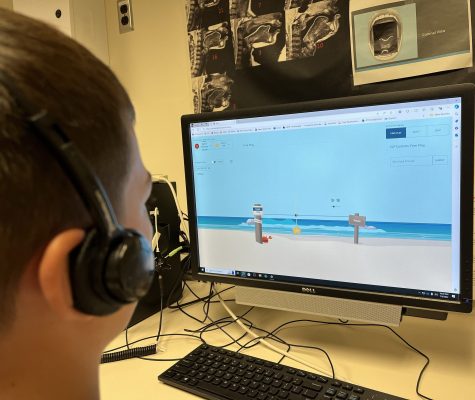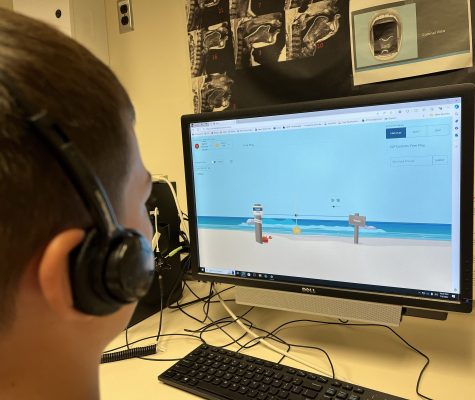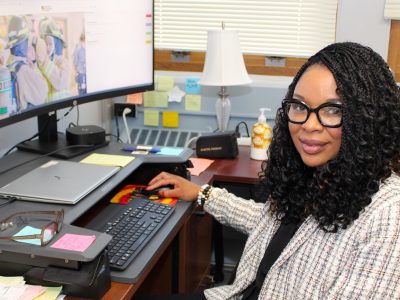Professor Receives NIH Grant to Study Biofeedback Technologies for Speech Therapy
One of the most common speech errors in English is making a “w” sound instead of the “r” sound. Although most children grow out of these and other errors, 2%-to-5% exhibit residual speech sound disorder through adolescence.

Research has shown that biofeedback technologies can help benefit children struggling with the “r” sound by making the sound visible. Jonathan Preston, a professor in the Department of Communication Sciences and Disorders in the College of Arts and Sciences, is part of a team of scientists awarded a grant from the National Institutes of Health (NIH) to explore the effectiveness of technologies that use visual targets to help people adjust their speech.
Biofeedback speech therapies use electronics to display a real-time representation of speech that the child ordinarily can’t perceive on their own. In this instance, the technologies allow the child to see what an “r” sound looks like on a screen. The child hears their “r” sound and views a visual display of their speech on the screen, along with a model representing the correct pronunciation of the sound. The model provides a visual target for the child to use to adjust their speech.
Preston and scientists at New York University and Montclair State University will compare the effectiveness of these technologies for speech therapy under different conditions. The researchers will also evaluate AI-based tools that could guide home-based practice in tandem with human oversight.

“If we want kids to improve quickly, we’d want them to practice at home,” Preston says. “But they don’t have a skilled speech pathologist available at home to help them practice.”
Many children also lack access to clinicians who use biofeedback methods. AI could help change that. Through the research team’s efforts, an AI-powered speech therapy algorithm was trained on the voices of over 400 children.
Then comes individualized practice. “At home, kids will talk into a microphone, and based on the algorithm, the child will receive feedback about whether they spoke the word clearly or not,” says Preston.
Learn more about the grant on the College of Arts and Sciences’ website.
Story by John H. Tibbetts



